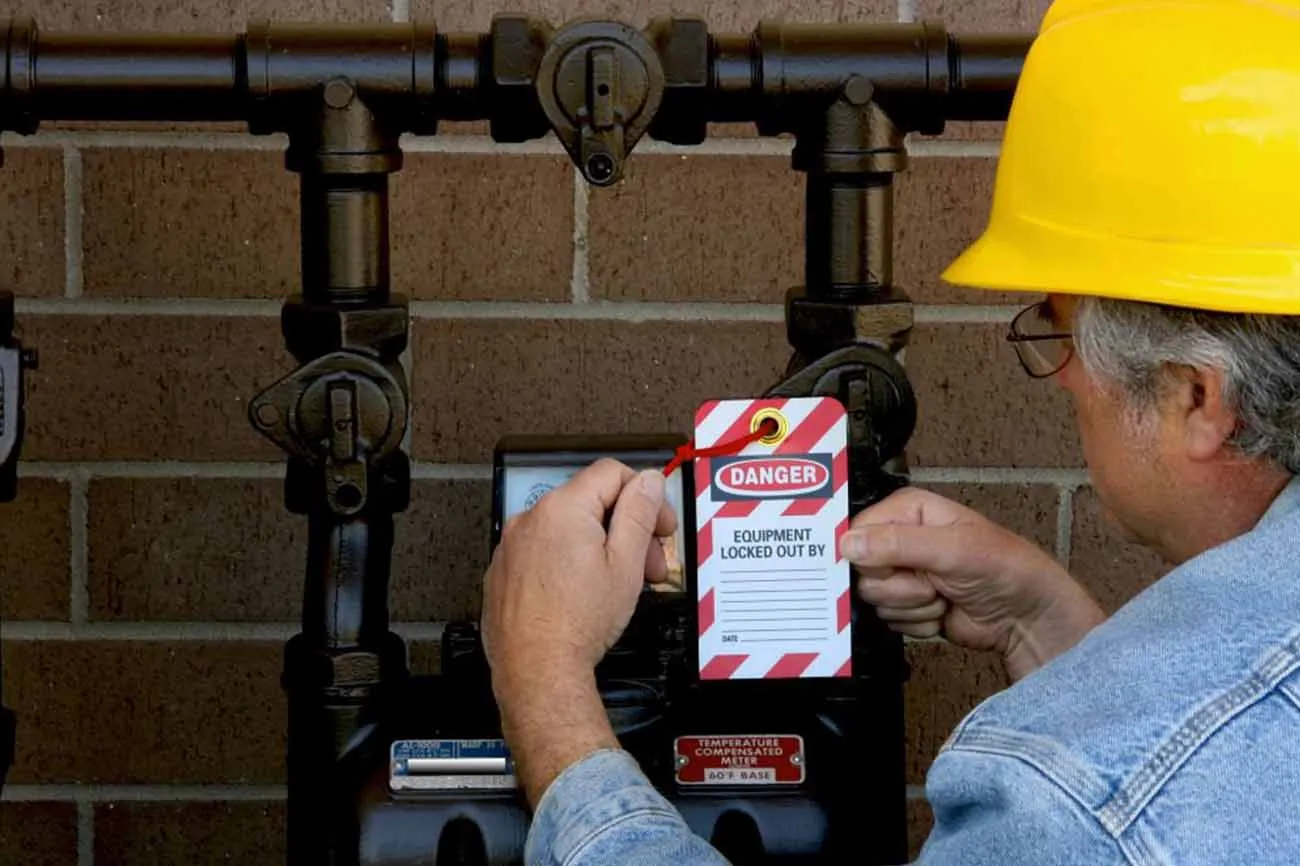Implementing Lockout/Tagout Protocols in Chemical Manufacturing Facilities

Introduction
Lockout/Tagout (LOTO) protocols serve as essential safety measures, setting the foundation for securely isolating hazardous energy during the repair or maintenance of machines in industrial settings.
These procedures involve using a lockout device to effectively halt energy flow. Additionally, a tag or label is affixed to this device, clearly indicating the assigned employee in charge of the lockout, alongside the lockout’s specific date and time, as well as crucial visuals and safety details.
The most reliable method of implementing LOTO is through creating a physical separation, such as disconnecting cables or fitting a blind flange, to completely eliminate potential risks. On the other hand, the simplest—and least effective—approach is merely using a warning tag. Sole reliance on tagging, without locking out the energy source, is not advisable and should only be considered when locking out is not feasible. In cases where tags are used without a lockout, it may be necessary to employ additional precautions, like physically obstructing the control switch, to ensure safety.
Understanding Hazardous Energy Types
Hazardous energy is any form of energy capable of causing harm, such as electric shocks, burns, suffocation, or even fatal injuries.
The primary kinds of hazardous energy encountered include electrical, chemical, heat-related, air pressure-driven (pneumatic), and mechanical energies.
Why Lockout/Tagout is Unique for Chemical Manufacturing Facilities
Lockout/Tagout (LOTO) processes in chemical manufacturing settings are tailored to manage energy within processing and piping systems, employing methods like bank flanges and slip blinds for isolation. This specialized approach for chemical plants focuses on shutting down process systems, prioritizing the depressurization of piping networks, and ensuring the removal of all substances.
For these operations, all lockout devices must adhere to strict standards, be well-documented, and easily recognizable. Additionally, many chemical plants enhance their LOTO practices with a work permit system. This system specifies the machinery needing maintenance, along with any special procedures related to the equipment, system, or the chemicals being handled.
A basic LOTO protocol for handling pressurized liquids and gases typically involves:
- Turning off and securing energy sources, using either integrated solutions or external attachments
- Labeling valves with tags
- Releasing any trapped gases or liquids
- Purging pipelines thoroughly
Given the unique hazards present, chemical plants necessitate distinct LOTO strategies compared to those used for other types of machinery and equipment.
10 Essential Steps for a Successful Lockout/Tagout Process in Chemical Plants
1. Provide Comprehensive LOTO Training to Employees
Equip your team with the necessary LOTO training, including practical exercises that mimic real-life scenarios. Documentation of procedures and the lockout devices used is crucial.
2. Assess the LOTO Procedure's Scope and Risks
Identify the specific tasks, the number of staff needed, and the associated risks.
3. Maintain Clear Communication
Inform all impacted workers that maintenance is underway on the process system or piping network, and that LOTO measures are being implemented.
4. Shut Down and Clear the Process System
Design a detailed lockout plan for each maintenance activity or possible emergency, complete with a lockout point checklist.
5. Define Authorized Workers' Duties
Implement a lock system assigned to workers, incorporating bland flanges and slip blinds. Ensure tags at lockout points are well-placed, showing shutdown status, warning messages, and operation prohibition. Tags should also display the names of the accountable worker and their supervisor.
6. Securely Isolate the System for Maintenance
After isolating and locking out the system, perform a test restart to ensure no alternate energy sources are active. This verification must be done by qualified staff, confirming the system is fully locked out.
7. Discharge All Accumulated Energy
Release or neutralize all forms of stored energy, such as electrical, pressure, fluids, gas, and mechanical. Test the equipment and systems post lock and tag application to verify they are inactive. Depressurize, empty, and clean all isolated pipelines and systems.
8. Implement Shift Change LOTO Procedures
Inform all relevant workers about the procedure for shift changes when equipment remains locked out. Transition locks from the outgoing to the incoming shift.
9. Update LOTO Measures to Reflect Operational Changes
Adapt your LOTO procedures to match any changes in system operations over time.
10. Detail Procedures for LOTO Removal and System Restart
Establish clear guidelines for reactivating the process system and piping network, including the removal of locks and tags. Ensure the restart is overseen by qualified personnel.
By following these steps, chemical plants can ensure that their lockout/tagout processes are both effective and compliant with safety standards, minimizing the risk of accidents during maintenance.
The Impact of Lockout/Tagout on Workplace Safety
The Occupational Safety and Health Administration's (OSHA) regulation on The Control of Hazardous Energy (Lockout/Tagout), codified as 29 CFR 1910.147, offers a flexible framework designed to meet the unique energy control requirements of various types of machinery and sectors.
OSHA's data underscores the critical role of lockout/tagout (LOTO) practices in enhancing workplace safety. By adhering to these guidelines, it's estimated that over 100 lives are saved, and 50,000 injuries are prevented each year. Moreover, OSHA highlights that individuals harmed by hazardous energy lose an average of 24 days from work for recovery. This statistic alone emphasizes the indispensable value of LOTO protocols within any industrial safety strategy.
Conclusion
In conclusion, the adoption and meticulous implementation of lockout/tagout protocols in chemical manufacturing facilities are paramount for safeguarding workers from the myriad risks associated with hazardous energy. These procedures not only prevent accidents but also foster a culture of safety and responsibility, critical in environments dealing with potentially dangerous substances.
By prioritizing the education of employees on LOTO practices, alongside the establishment of clear, standardized procedures tailored to the unique needs of chemical plants, businesses can significantly reduce the occurrence of workplace injuries and fatalities. Embracing these safety measures is not just a regulatory compliance issue but a fundamental aspect of operational excellence and employee welfare in the chemical manufacturing industry.
